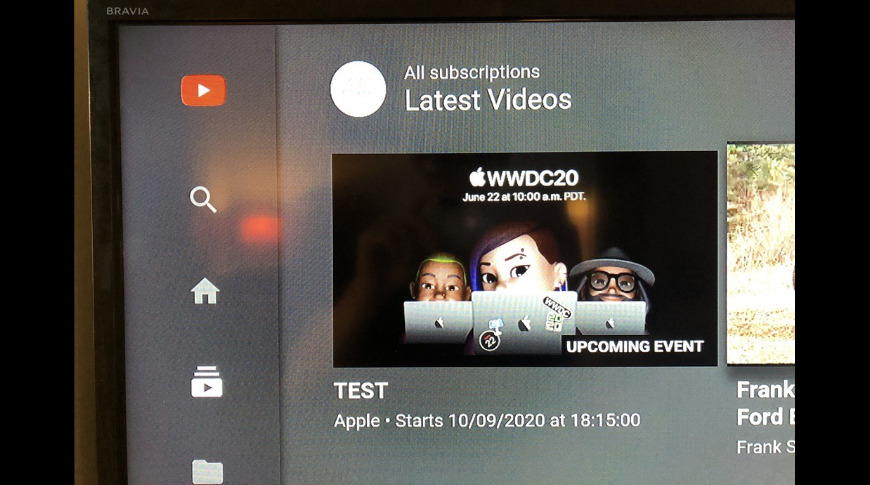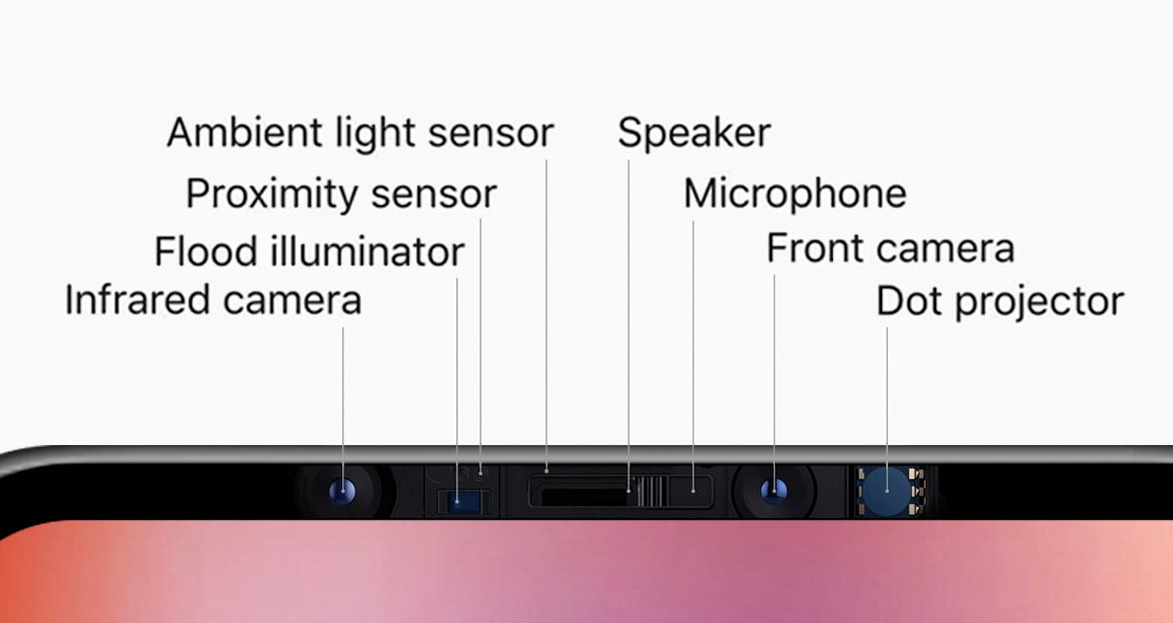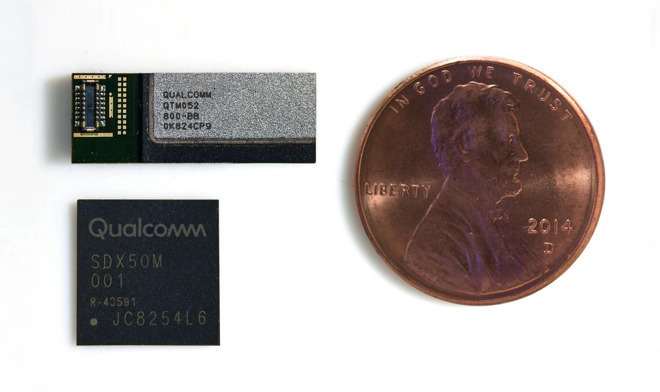Apple is expected to hold its usual September iPhone launch event in the coming weeks, making this an ideal time to check out the rumors for the "iPhone 12" generation that will almost certainly be unveiled by the company.
Each year, the highly anticipated new generation of iPhones spawn a vast amount of rumors and speculation, with leaks and analysts claiming to know what to expect from the year's launches. This is AppleInsider's rundown of rumors that hint at what's included with the "iPhone 12" and its stablemates this year.
When will the "iPhone 12" event be?
Apple traditionally holds its main iPhone launch event in September, something it has done for eight years running. While Apple has held other events in October, they are typically used for the launch of other major products.
On August 12, serial leaker Jon Prosser tweeted that Apple would break with tradition, by announcing product changes to the iPad lineup and introduce the "Apple Watch Series 6" in the week starting September 7. The annual iPhone event would instead take place on October 12.
Another leaker by the name of "ihacktu" on Twitter instead errs towards the event happening on September 8 for the iPhone, while a second event for a new iPad Pro and Apple Silicon Macs will take place on October 27. This seems to go along with the typical event structures of previous years.

A screenshot allegedly showing Apple's 'Test' stream for September
There is also the belief that Apple itself has spoiled the date of the event. A "test" video for an event set to start at 1:15pm Eastern Time on September 10 appeared on Apple's YouTube channel, before being removed from view.
When can you buy an "iPhone 12?"
The effects of the COVID-19 pandemic caused issues with Apple's famous supply chain, and it is thought that it has interfered with Apple's intended scheduling to ship the iPhone. Indeed, during its earnings call, Apple leadership confirmed it would not see a "normal" iPhone release schedule in 2020.
As for when the models would go on sale, this would normally depend on the timing of the event itself, but given Apple's warning, all bets are off.
Prosser's October iPhone event claim was accompanied by a suggestion that Apple could break the launch into two release phases, with mid-tier "iPhone 12" models up for preorder in the week of October 19, followed by "Pro" models in November.
An August 3 report from DigiTimes also puts forward the case of there being a two-stage release, but with two 6.1-inch models shipping first followed by the larger and smaller models. The report also claimed the peak time for shipping all new models will skew between two and four weeks later than normal.
How many "iPhone 12" models or screen sizes will there be?
Rumors have largely pointed to four models being released in this generation, in two tiers. The lower tier will consist of the "iPhone 12" and "iPhone 12 Max," which will sport 6.1-inch and 5.4-inch displays, while the upper will be the "iPhone 12 Pro" and iPhone 12 Pro Max, with 6.1-inch and 6.7-inch screens respectively.
![Renders of the 2020 iPhones [via iSpazio]](https://photos5.appleinsider.com/gallery/37406-70223-0-67913-iPhone-12-lineup-iSpazio-xl-xl.jpg)
Renders of the 2020 iPhones [via iSpazio]
The two tiers will apparently differentiate in a few ways, as it does with the current iPhone 11 generation, with the screens this time being one such variation.
While OLED is expected across the board, rumors point to the Pro models having a Samsung-derived OLED with "Super Retina XDR," as well as 120Hz ProMotion support and a 10-bit color depth. In theory this will mean the Pro models will be able to display a wider range of color than the non-Pro versions, including better HDR video.
Screenshots and video surfacing in late August via Jon Prosser pointed to a ProMotion feature being included in the "iPhone 12 Pro Max," including settings to enable a "High Refresh Rate" and an "Adaptive Refresh Rate."
A14 improvements
Launches of new iPhone models usually include a new system-on-chip designed by Apple, and it is likely to continue to be the case for the "iPhone 12." Following on from the A13 Bionic, Apple is most probably going to opt for the name "A14."
Early rumors pointed to either the use of chip partner TSMC's 5-nanometer or 6-nanometer processes to create the chips, with the smaller size thought to be the one in use for this generation. TSMC is believed to have started mass production using its 5-nanometer process in the second quarter of 2020.
![An alleged photo of the A14 SoC [via Mr. White]](https://photos5.appleinsider.com/gallery/37406-70224-36873-68934-Apple-A14-Chip-xl-xl.jpg)
An alleged photo of the A14 SoC [via Mr. White]
In July, a series of images posted to Twitter claimed to show Apple's "A14" processor, though aside from showing the name on the top of the chip, it offered no real detail about the chip's performance. A date on the chip of "2016" refers to the 16th week of 2020, which would suggest the chip was manufactured in April.
In August, TSMC detailed some of the performance and power improvements of its 5-nanometer manufacturing process over earlier types. Compared to the N7 process used for the A13, the N5 is claimed to provide either a 15% performance boost for a comparable amount of power usage, or maintain the same level of performance while being more efficient of power by 30%.
A June video by EverythingApplePro and Max Weinbach claimed the "A14" will pack double the transistors of the A13, at 15 billion versus 8.5 billion.
"iPhone 12" Rear cameras and LiDAR
The camera system on the "iPhone 12" is largely thought to be relatively similar to what was offered in the iPhone 11 range, with the non-Pro having two cameras while the Pro models sport three cameras.
For the "iPhone 12," this would consist of 12-megapixel wide-angle and 12-megapixel ultra-wide-angle lenses, while the "iPhone 12 Pro" pair will have a third 12-megapixel camera for telephoto shots. All will likely benefit from processing improvements, both in software and with the A14's higher performance.
In June, YouTube's EverythingApplePro and Max Weinbach claimed the rear cameras will be able to record 4K footage at frame rates of 120fps and 240fps, effectively increasing the resolution of the slo-mo function.
![3D-printed mockups [via Mac Otakara]](https://photos5.appleinsider.com/gallery/37406-70225-0-66669-FABD6661-246E-432B-AE5D-02BC1137501D-xl-xl.jpg)
3D-printed mockups [via Mac Otakara]
Screenshots published in August by Jon Prosser supported this, with settings text indicating 4K video could be recorded at 120 or 240fps. There were also mentions of an "Enhanced Night Mode," toggles for "zoom capabilities," "bit depth video," and "advanced noise reduction" in the same leak.
Back in March, famed analyst Ming-Chi Kuo said the camera array in the "iPhone 12" will support at least one "7P" element instead of a 6P. The use of a seven-element plastic lens may help Apple refine the optical systems it uses to improve photographs and video.
There have been some reports Apple will add LiDAR to the Pro models, borrowing the concept from the iPad Pro. Able to produce a depth map, the LiDAR scanner can help the iPad create a more detailed map of the environment than currently possible using the ARKit framework and standard cameras.
It is feasible that Apple may have some extra features planned for LiDAR in the iPhone, potentially to improve photography. The TrueDepth camera array at the front uses depth mapping as part of its Portrait mode, with depth mapping at the back potentially assisting with other types of photographs involving subjects.
TrueDepth and the iPhone notch
The driving force behind Face ID will continue to be available in this generation, with no word on changes to its capabilities for 2020 so far. What may change is how it appears on the iPhone itself.
Early images from Ben Geskin in September 2019 suggested there were iPhone prototypes that housed the TrueDepth array within the top bezel, eliminating the need for a notch in the display. Geskin's image echoed another July note from Ming-Chi Kuo, claiming the notch would either decrease in size or be removed entirely.

Ben Geskin's alleged in-bezel TrueDepth camera array.
In April, images from leaker "choco_bit" on Twitter suggested the notch could be considerably smaller, but not completely gone. Other images from Jon Prosser that month included a CAD drawing that also showed a smaller notch.
In August, Prosser said the TrueDepth camera notch was largely unchanged from current versions.
Will the "iPhone 12" have 5G connectivity?
One feature that is universally believed to be arriving this year will be support for 5G mobile networks. Apple's signing a deal with Qualcomm puts 5G modems within its grasp, but the main question is one of how it will be implemented in the models.
As 5G is made up of two broad bands of signal, covering sub-6Ghz frequencies and mmWave, 5G aims to have robust and wide coverage using the former and potentially weaker high-speed connectivity with the latter.

A Qualcomm modem and antenna.
Analysts at JP Morgan suggested in December that there would be sub-6GHz 5G support across all models, but only the top-tier versions will have mmWave support.
In June, Wedbush expected Apple would ship models with a mix of 4G and 5G compatibility across the lineup.
DigiTimes wrote in July that all models will work with both bands, but that Apple was entertaining the possibility of issuing models with partial 5G support for specific markets for future generations.
To offset the cost of expensive 5G components, TrendForce speculated Apple would ship the new models with fewer accessories, to bring the overall bill of materials down.
What will the "iPhone 12" look like?
The vast majority of rumors point to Apple borrowing the design language of the iPad Pro lineup for the "iPhone 12" collection.
In April, a Bloomberg source claimed the use of more distinct sides with flattened stainless steel edges instead of a gradually curved corner. The design would echo that of the iPhone 5.
Schematic leaks and supposed molds of the new models followed, which went along with the sharper-edged motif across the range.
In turn, these helped various outlets create dummies and mockups of what the new models could look like, complete with the square camera bump on the rear and flat metal edges.
Said recreations include versions published by Sonny Dickson, 3D-printed versions from Mac Otakara, as well as versions sourced in July for AppleInsider. The latter of the group is based on schematics leaks used by case manufacturers to produce accessories ahead of the official Apple announcement, and are a fairly good indicator of what to expect from the finished product.
There may be a difference in terms of body design between Pro and non-Pro versions, with the former thought to use stainless steel while the latter uses aluminum.
Other Features of the "iPhone 12"
The memory of the Pro models is thought to be higher at 6 gigabytes, compared to four for the non-Pro versions. The Pro editions will also seemingly benefit from higher storage levels, adding a 512GB option on top of the main 128GB and 256GB capacities.
There is the suggestion that this year could see Apple eliminating Lightning from the iPhone range and moving over to USB-C, though it is also proposed this may occur in 2021, not 2020.
Lastly, to help people use wireless charging correctly, Apple may include magnets in the rear of the casing to help position the iPhone on charging points.
How much will the "iPhone 12" cost?
In terms of how much the new models will cost at launch, the "iPhone 12" is tipped to cost $649 and $749 for the 128GB and 256GB models respectively, rising to $749 and $849 for the "iPhone 12 Max."
For the Pro models, the "iPhone 12 Pro" is thought to be priced from $999 for 128GB of storage, $1,099 for 256GB, and $1,299 for 512GB. The "iPhone 12 Pro Max" is believed to be priced even higher at $1,099, $1,199, and $1,399, depending on capacity.
Technology - Latest - Google News
August 31, 2020 at 06:17AM
https://ift.tt/3gJVeSu
What to expect from the Apple 'iPhone 12' launch in September - AppleInsider
Technology - Latest - Google News
https://ift.tt/2AaD5dD

No comments:
Post a Comment